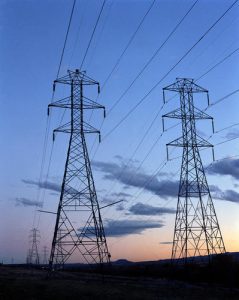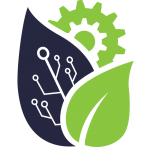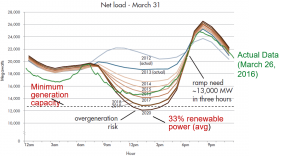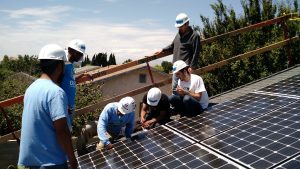Power Systems Management
In today's technology driven world, energy generation, storage and transmission/distribution play a key role in keeping society moving. This can range from the very big - the electrical transmission grid - to the very small, such as powering your watch or phone. As consumer electronics become more efficient, communities tend towards having more in-home devices and thus the overall demand is increasing. It is this balance between energy supply and demand that must be sustainably maintained to provide a reliable and green energy service. Understanding the fundamentals of how we create, store, and move electricity in basic systems provides the first step to understanding much more complex power systems, and thus is the first step in making our energy consumption sustainable.
as powering your watch or phone. As consumer electronics become more efficient, communities tend towards having more in-home devices and thus the overall demand is increasing. It is this balance between energy supply and demand that must be sustainably maintained to provide a reliable and green energy service. Understanding the fundamentals of how we create, store, and move electricity in basic systems provides the first step to understanding much more complex power systems, and thus is the first step in making our energy consumption sustainable.
As with all designs, one must consider the tradeoffs associated with typical components. At the system-level, anything that requires electrical power consists of the following: a power source, power management (or conditioning), energy storage and, of course, the load needing to be powered. To create sustainable systems, each design decision must be considered for its benefits and challenges. For example, residential solar power may seem like an obvious solution to move towards a more sustainable power grid. However, unless the home is also equipped with energy storage, there is no way to control when this generation is supplying the grid, which was not made to withstand such quick ramp rates. Furthermore, solar generation tends to cut-off just prior to or during peak demand, leading to insufficient supply and power failure along the grid. The inclusion of batteries, though more expensive, will alleviate this problem but results in a detrimental environmental impact at end of life.
In this suite of modules, we will first gain a foundation in simple power systems and move toward the feasibility and design of renewably-powered microgrids. Power consuming loads are ubiquitous in everyday life; thus, so are energy generation and storage systems - including the computer or phone you're using to view this page. The first modules will review the basic principles of how to design and implement these systems in common devices - a solar powered light (DC) and portable USB phone charger (AC). The second module will build on these learnings in the design and installation of a residential solar system, to give an idea of both the simple and complicated ways we use energy today. Finally, students will be challenged in performing feasibility and appropriate design of hybrid microgrids in the last module, microgrid simulation and design.



